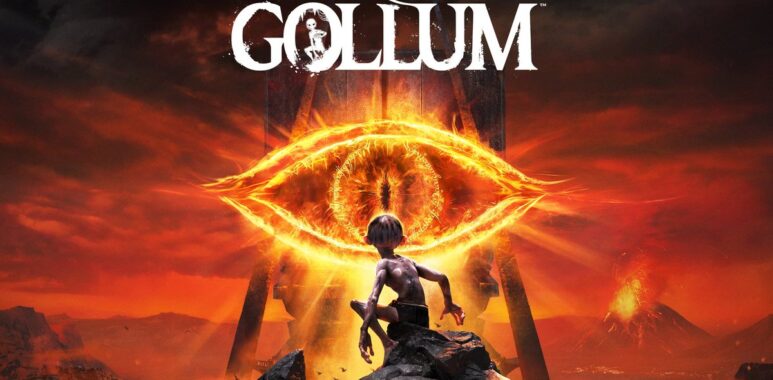
The Lord of the Rings: Gollum Review
As soon as Daedalic said they were going to make a Lord of the Rings game about Gollum, it seemed like a bad idea. Playing as the sad, pathetic former Hobbit seemed like the worst idea for a game of any character, and many fans thought it was doomed to fail. They were right, but maybe not for the reasons they thought they were.
He's got nothing more to lose… How far will he go to retrieve his Precious? 💍
The Lord of the Rings: Gollum™ is now available on PC, PlayStation and Xbox consoles.
➡️ https://t.co/TWqfcna0yn#GollumGame pic.twitter.com/gyTrVMiW2s
— The Lord of the Rings: Gollum (@GollumGame) May 25, 2023
Gollum is a mix of two types of action genres, and neither one stands up to close inspection. At its core, it’s a simple sneaking platformer with a dramatic look. Think of it as something in between Uncharted’s wall-climbing and Splinter Cell’s sneaking. Gollum doesn’t have the best body, so he’s a little awkward both in and out of character.
A few words from the " The Lord of the Rings: Gollum™ " team pic.twitter.com/adPamy5EjO
— The Lord of the Rings: Gollum (@GollumGame) May 26, 2023
The majority of the action is around Gollum platforming through areas and dodging guardians. The screen goes dark as soon as he’s detected, and the game resumes from a game over. Meanwhile, several of the speech and UI typefaces look to be Calibri from Microsoft Office.
The game takes place just before the events of The Fellowship Of The Ring , long after he has lost the One Ring to Bilbo Baggins and is still in Mordor, first as a prisoner. As is characteristic of his character, Gollum’s aims are simple, and you spend the whole game trying to catch up with Bilbo and reclaim your prize.
While the storytelling is the greatest aspect of the game, it isn’t exactly a complement, given that this isn’t a tale that needed to be told in the first place. You learn nothing new about Gollum, and while the scenes in which he talks to his alter ego Sméagol, attempting to persuade him to agree to his schemes, are the greatest portions of the game, they are let down by the voice-acting.
Tortured by his split personality, he can be vicious and wicked as Gollum, yet friendly and cautious as Smeagol.
ONE day remain until the release of The Lord of the Rings: Gollum™!
Pre-order now: https://t.co/gGUMDZZR7F#GollumGame pic.twitter.com/9UUliXAWRV
— The Lord of the Rings: Gollum (@GollumGame) May 24, 2023
The action side’s two halves are functional but underdeveloped. Gollum is simply too dirty and malnourished to pass for a realistic Nathan Drake or Sam Fisher, and whether he successfully climbs for a ledge or plummets to his quick death appears arbitrary at moments. Control inputs are occasionally lost, and while both the stealth and platforming phases are liberally checkpointed, you must either follow the planned path or perish.
Mordor is startlingly bleak in this version, crueller than the cartoonish heavy metal aesthetics of Middle-Earth: Shadow Of War, with its zany orcs and seductive Shelob. Mordor is gruesomely detailed in this vision, with ornately engraved black steel, stretched and bleeding skins, and a lot of smooth, fresh-flowing blood and black water. While there isn’t much violence portrayed, there is enough unpleasant aftermath to keep the mind busy.
He has survived dangers most wouldn't dare talk about…
The Lord of the Rings: Gollum™ is launching in 2 days!
Pre-order now: https://t.co/gGUME00oXd#GollumGame pic.twitter.com/QXTiQxDBhj
— The Lord of the Rings: Gollum (@GollumGame) May 23, 2023
The game takes use of this chance to delve into the mechanics and politics of Mordor. Gollum also works in the Orc breeding trenches, demonstrating how Sauron’s forces are cultivated like rebellious sea-monkeys.
Though the gameplay is sometimes too easy, Gollum’s stats substantially impede you. Your stamina, which is needed for sprinting and climbing certain things, depletes swiftly and reloads slowly. Your health is equally frail; you absorb fall damage from sometimes ridiculously low heights, and materials to refill HP (primarily worms and mushrooms) are scarce. In the game, there are no new powers or upgrades to acquire. While reflecting Gollum’s withering nature in the character’s weak basic numbers is a potentially fascinating notion, it ends up playing out more as a nuisance than a useful storytelling element.
Your time to explore Middle-earth will begin in 3 days!
Pre-order now: https://t.co/gGUMDZZR7F#GollumGame pic.twitter.com/86AHbYVP5I
— The Lord of the Rings: Gollum (@GollumGame) May 22, 2023
You’re always travelling from one checkpoint to the next, with the objectives never being more difficult or fascinating than acquiring an item or following a character. There’s always the chance that it may have been exciting if it provided a sense of continual motion and suspense, but you constantly returning to the same spots, especially in the early half of the game.

